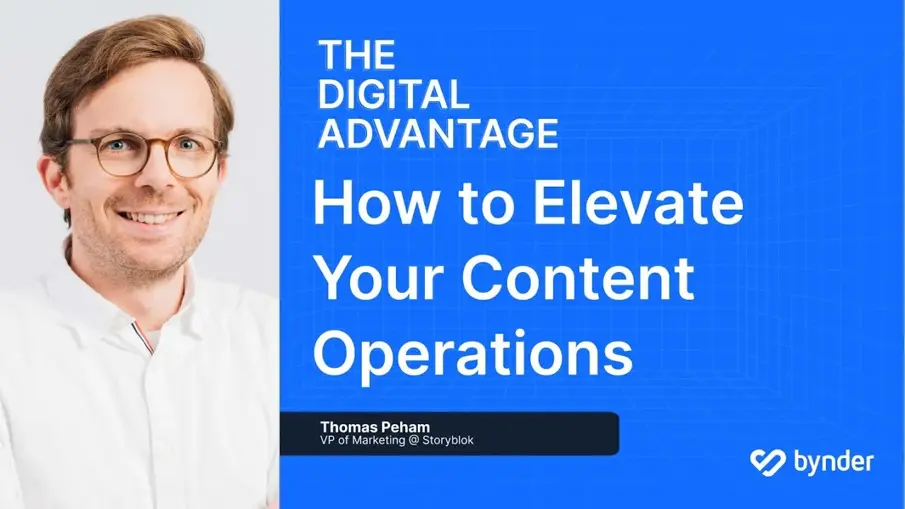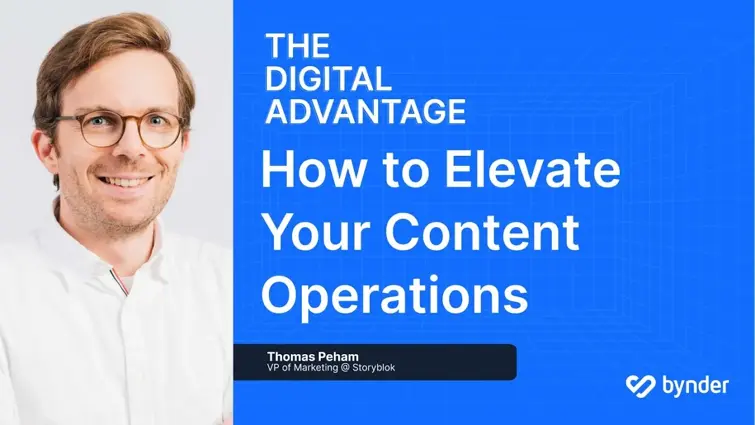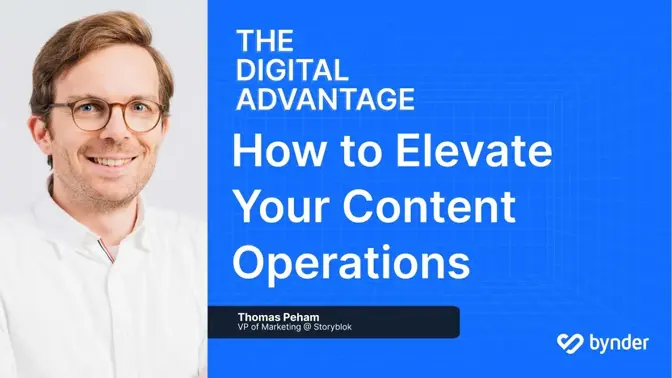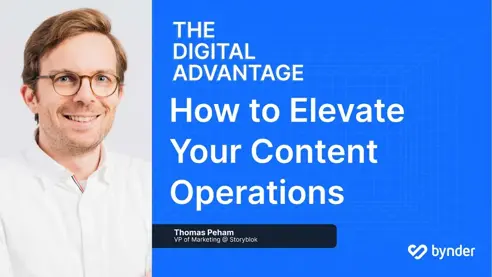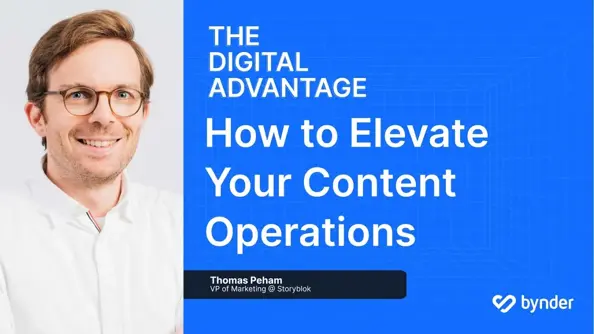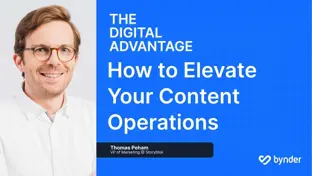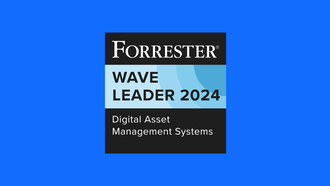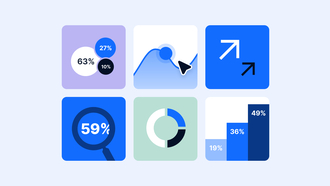The Digital Advantage is an ongoing series where we host a conversation with a leading marketing expert to discuss trends, challenges, solutions, and priorities in marketing—and how to remain competitive in an uncertain economic landscape.
In this blog series, we'll be unpacking the key takeaways and insights from the episodes, starting with Dónal O Mearáin's conversation with Thomas Peham, VP of Marketing at Storyblok. They discuss everything from consumer expectations for personalized content experiences, to the need for agility and flexibility in content management.
The following excerpt is a deep dive into the main talking points from the conversation between Dónal and Thomas. Want to watch the full interview? You can watch the full episode below.
Dónal: Can you briefly introduce yourself and Storyblok?
Thomas: I'm the VP of Marketing at Storyblok. Storyblok is a modern content management system, hosting around 200,000 projects worldwide. Projects can be anything from websites and mobile app experiences, to any digital experience that needs some sort of content hub.
We have clients like Adidas and Marc O'Polo who use Storyblok to deliver cohesive content experiences across their online shops. Storyblok also powers in-store experiences, like the digital interfaces at Tesla dealerships in Germany.
Dónal: You recently conducted a survey that revealed a surprising statistic. Can you share it?
Thomas: We asked marketing leaders in the e-commerce space if they've ever been embarrassed by their own website. And surprisingly, 48% of all respondents said that they had been embarrassed at least once. When I do speaking engagements and I ask the same question, usually 70-80% of hands go up. So there's clearly something fundamentally wrong with the way we build website experiences as marketers. If so many marketers are embarrassed by their own websites, imagine the impact this has on business KPIs like revenue, pipeline, and lead generation.
In the end, it comes down to processes: How do we manage content? Who creates that content? How do teams collaborate? If teams are siloed but still working on the same experiences, it's likely you'll end up with an experience you're not proud of.
Dónal: Was there any sort of detail on what's embarrassing them? And how they'd like to improve their website experiences?
Thomas: So, we were asking businesses what's important to them, and what they think matters to consumers. Most of the time, the business responses went something like: 'We need more content! We need better website features and search. We have to improve the design and UX.' You know, all that industry jargon.
But here's the thing, consumers don't care about fancy features and functionalities. At the end of the day, they just want to get their questions answered, find solutions to their problems, and do it all easily through a smooth web experience.Thomas Peham
VP of Marketing at Storyblok
The problem is, businesses think they have to keep piling on complex features. But really, consumers just want a simpler way to find what they're looking for. Sounds easy, right? Well, with people, technology, processes, content, and all that’s involved, it's actually a pretty complex effort. I get why businesses struggle with this.
Dónal: You've mentioned the four key areas of people, processes, technology, and content. Can you dive deeper into the specific pain points marketers are facing?
Thomas: The key issue is how to use content in a personalized and structured way to build great customer experiences. Our survey also showed that 71% of consumers expect personalized experiences across all platforms. So, if I'm browsing products online, I expect that same cohesive experience when scrolling through Instagram and see an ad from my favorite sneaker brand. Or even walking down the street and popping into a store – that should all feel connected. Right? We expect that as consumers, but businesses? We're struggling to keep up.
Only 6% of businesses can actually deliver seamless, personalized, localized experiences across content and digital platforms. The content personalization gap is a major pain point for businesses. But why are we failing at providing these personalized experiences?
One reason is that brands struggle to produce the vast amount of content needed for personalized experiences.Thomas Peham
VP of Marketing at Storyblok
Plus, new technologies and distribution tools often exist in silos, leading to fragmented content experiences and outdated content across different platforms.
Dónal: That's exactly what we're seeing at Bynder. Brands don't have a single source of truth for their content or a connected ecosystem to distribute the right content to the right platform, and ultimately to the right people.
Alright, we've talked about the struggle of keeping up with all this content and these new platforms being all over the place. The big question is: what can brands actually do to create those great content experiences that consumers expect?
Thomas: It starts with having one central place, one single source of truth, like you mentioned, from a content perspective. Beyond that, brands need to look at their existing workflows. Are they clear and efficient? What's the current state of content management, and what would be the ideal workflow to deliver exceptional experiences across all platforms? Another thing is enabling your team to collaborate in an efficient and productive manner to ship content faster, which will, in turn, build better content experiences.
Dónal: I'd love to get your take on how you see AI evolving to shape content experiences?
Thomas: I see an important role for AI in content optimization. Marketers want to be creative, we want to spend time coming up with new campaigns, ideas, and so on. We don't want to spend time tagging content or image clustering, for example. That's where AI can help by automating the tasks marketers don't want to do in the first place.
AI and automation can also help us in the ideation and research phase. Let's take ICP research for example. AI can analyze both first-party and external data to help us refine our ideal customer profiles. AI tools can not only assist with this process but can also help us create targeted content for those audiences. This content improves discoverability both internally and for published content. I believe AI presents strong use cases in these areas.
Bynder's Content Workflow with AI assist capabilities enables marketers to accelerate content creation by generating, editing, translating, and polishing drafts effortlessly.
Ultimately, this shift towards AI in content creation and editing allows us, as content marketers and teams, to move away from a purely creation- and editing-focused role. We can dedicate more time to the ideation and research side of things, where our human expertise and skillsets are most valuable. Translation is a big area for this, and I also believe localization, which involves adapting content for specific regions, is an under-utilized application of AI-assisted automation.
Dónal: I completely agree with you there. Uploading this video interview to our DAM will automatically generate a transcript for searching. When I need to find anything related to Storyblok, even if it's not mentioned in the title, the transcript search will surface it. This automatic discoverability through AI transcripts is just one of the many benefits that will help us.
Before we wrap-up here, what's one lesson or learning you want our viewers to leave with today?
Thomas: Starting small is crucial. Everything we've discussed today might seem complex, but focus on taking small steps. Conduct a content audit first. Understand how content flows through your organization: which teams are involved and at what stages? Identify if there's a single source of truth for content. Finally, find a "pet project" – a few small projects where you can lead innovation in process, content, or technology – before rolling it out company-wide.
Enjoyed this episode? The Digital Advantage is an ongoing show by marketers for marketers who want to create engaging content experiences to differentiate their brand from the competition. You can find all the previous episodes here.
Want to learn more about how investing in your content experience can drive growth? Download the guide below.
